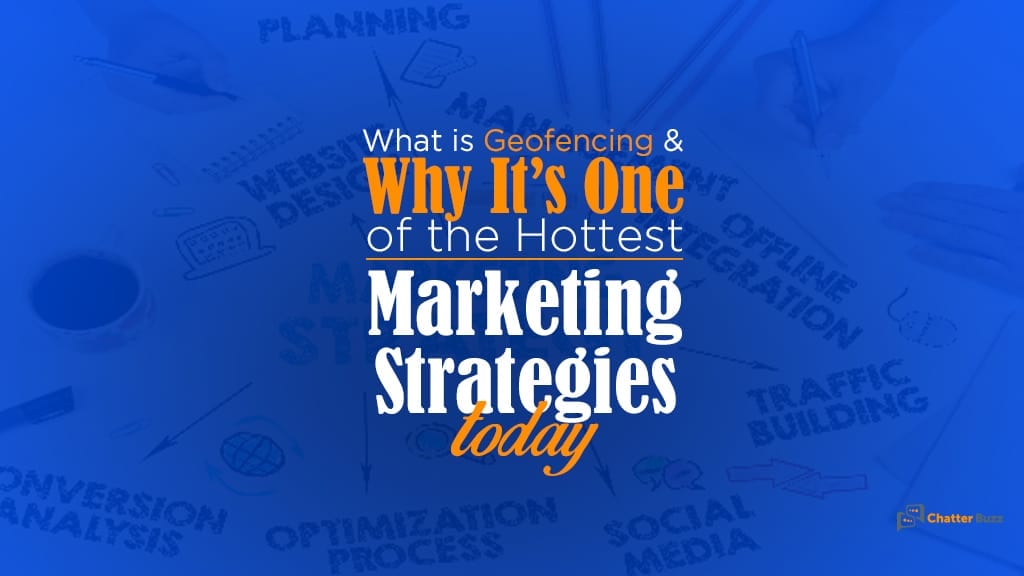What is Geofencing And Why It’s One of The Hottest Marketing Strategies Today

You know:
Despite online marketplaces like Amazon growing, the U.S. Census Bureau’s 2016 report indicated 92% of sales still occur in brick-and-mortar stores.
And so, it’s clear there’s an increasing demand for location-based data to help measure customer conversion. In fact, 8 in 10 marketers worldwide use location targeting.
But what are the practical applications for marketers to start leveraging location-based customer data?
The answer is geofencing.
But before we dive head first into its most effective use, let’s tackle what geofencing is…
What are some use cases for using geofencing for marketing?
At first glance, geofencing might not sound like it has a lot to do with marketing and that’s a fair assumption.
That being said, geofencing is actually a virtual perimeter marketers can draw around any specific location to gain insight on customers in the area.
And that’s a pretty useful tool to have in your marketing toolkit if you ask me.
For example, with geofencing, you can:
1. Reach new customers that are nearby
Reaching customers to showcase your business becomes more challenging as competitors enter growing markets.
And as I’m sure you’ll agree, over time, the returns of advertising diminishes as you’re reaching the same target audience over and over again.
Geofencing allows you to tap into a new group of potential customers—effectively extending your marketing reach.

For instance, if I’ve set up geofence zone for real estate marketing, I could be sending an automated message to say, “Hey, we know you love this neighbourhood and wanted to let you know our new real estate development is up for presale next week!” whenever my target audience steps into the geofencing zone.
Not surprisingly, being nearby boosts conversion rates substantially. According to Google, 28% of location driven searches actually result in a purchase.
#2. Engage loyal customers with real-time conversation and rewards
I’m sure you’ve heard this statistic already:
Increasing customer retention by just 5% can boost profits by 25% to 95%, according to the advisory firm Bain & Company.
And you already know that one of the most effective ways to improve customer retention is to offer rewards and loyalty programs.
The problem with that, however is that such programs is that the average American household belongs to 29 loyalty programs.
That means, having a loyalty program might not stop your customers from turning to a competitor anymore.
But when combined with geofencing, businesses can start a conversation with customers in real-time: during their visits and after transactions in multiple store locations.

An example of this is when businesses ask for feedback by saying, “Thank you for visiting! What was your experience like and how can we do better next time?” and provide rewards for responding.
And as Rosetta Consulting discovered, businesses with engaged customers are 5x more likely to purchase from them again in the future.
#3. Track competitors to determine future messaging for customers
Look, if you’re thinking that tracking competitors involve bugging competitor locations—you’re getting ahead of yourself!
Geofencing, does, however, give you the ability to add a virtual perimeter around competitor locations.
But how does this help your marketing strategy?
McKinsey & Company conducted a study that showed 25% to 50% of a brand’s highest spending customers would also spend on competitors.
So knowing how your customers are interacting with competitors is actually crucial to retain them.
The geofences around your competitors will help you learn which of your customer personas frequent competitor businesses.
A recent Harvard study suggests high rollers tend to seek out competitor businesses when they believe the relationship with a familiar business is disengaging.
Being informed on what your customers are seeking out from competitors will help you build a strategy to prevent customers from turning to competitors in the first place.
Mapping the future of your company by selecting the right geofencing platform
By now you’re probably wondering how to go about selecting a geofencing platform that works for you.
Since the age-old answer, “it depends”, doesn’t quite cut it—I’m going to walk through some key best practices to help map your future marketing success.
Set your sights on passive geofencing.
Passive geofencing collects more data because customers are less averse to using applications that aren’t constantly requesting access.
Not to mention, GPS dependent applications are huge battery drains. As Gagan Singh, SVP, and GM of Avast points:
“For many of us, our smartphones are the main device in our everyday lives. Knowing which of our apps are the hardest-hitting on battery life, data usage, and storage is important so we can manage any that we are regularly using on our phones.”
This shouldn’t be difficult to find in your search for a geofencing platform because the only platforms involving the use of GPS, are those that rely mapping services.
Test solutions for data accuracy.
Geofencing isn’t just about tracking location anymore, it’s becoming a strategy for marketers to collect customer data: from their buying behaviors to how they want to be engaged.
Research insights from Gallup tell us that, “businesses that leverage customer behavioral data outperform peers by 85% in sales growth and more than 25% in gross margin”.
So testing the geofencing platform for data accuracy is vital to implementation success.
Personally, I’ve found several key quantifiable data groups to get the most out of mobile geofencing:
- Foot traffic – What’s does the total amount of foot traffic in your geofenced areas look like? Make sure your marketing efforts are worthwhile by evaluating the distribution of your target audience that you can reach through your geofences.
- Time spent – Similar to time spent on virtual storefronts, accuracy in measuring the amount of time your target audience spends within your geofences is crucial. This helps marketers like yourself learn how target audiences spend their time. In turn, you’ll be able to plan strategies around how to keep customers within their geofences for longer periods of time.
- Visiting Trends – In order to provide your target audience with targeted content and messaging, you’ll need to first learn what they want to see. Marketers can dig into triggers that create more frequent visits by figuring out how often target personas convert to customers given their different visit patterns.
Big players in the geofencing game
Apart from the platforms you’re already familiar with like Google Adwords, Facebook Advertising and Twitter Advertising, there some other top players in the geofencing field that you might be overlooking.
Opting to reach your target audience through these platforms might prove to be more affordable depending on your industry.
- Bing Ads
- Pinterest Ads
- LinkedIn Advertising
- Instagram Advertising (Now part of Facebook!)
- And 7Search, Advertise.com, InfoLinks among the midsize players
Don’t worry if these big players don’t fit your geofencing needs.
If you’ve ever downloaded a free app that requests access to your location data, you’ve already interacted with a platform that has a geofencing feature in their advertising.
Seek out smaller players that also reach your target audiences. App Annie’s latest report shows smartphone users, on average, are using 9 apps each day and over 30 apps each month.

Talk about opportunity!
And finally, remember to keep your target audience in mind…
Whether you’re interested in implementing active or passive geofencing, remember the best use case is the one that maximizes your conversion opportunities.
You’ll find the best geofencing applications by getting to know your target audience.
Geofencing is a proven way to target location-based customers, so don’t miss out on customers who are just across the street.
Do you need someone to help you achieve your growth goals - then let us help you crush them? Let's chat!
Error: Contact form not found.









